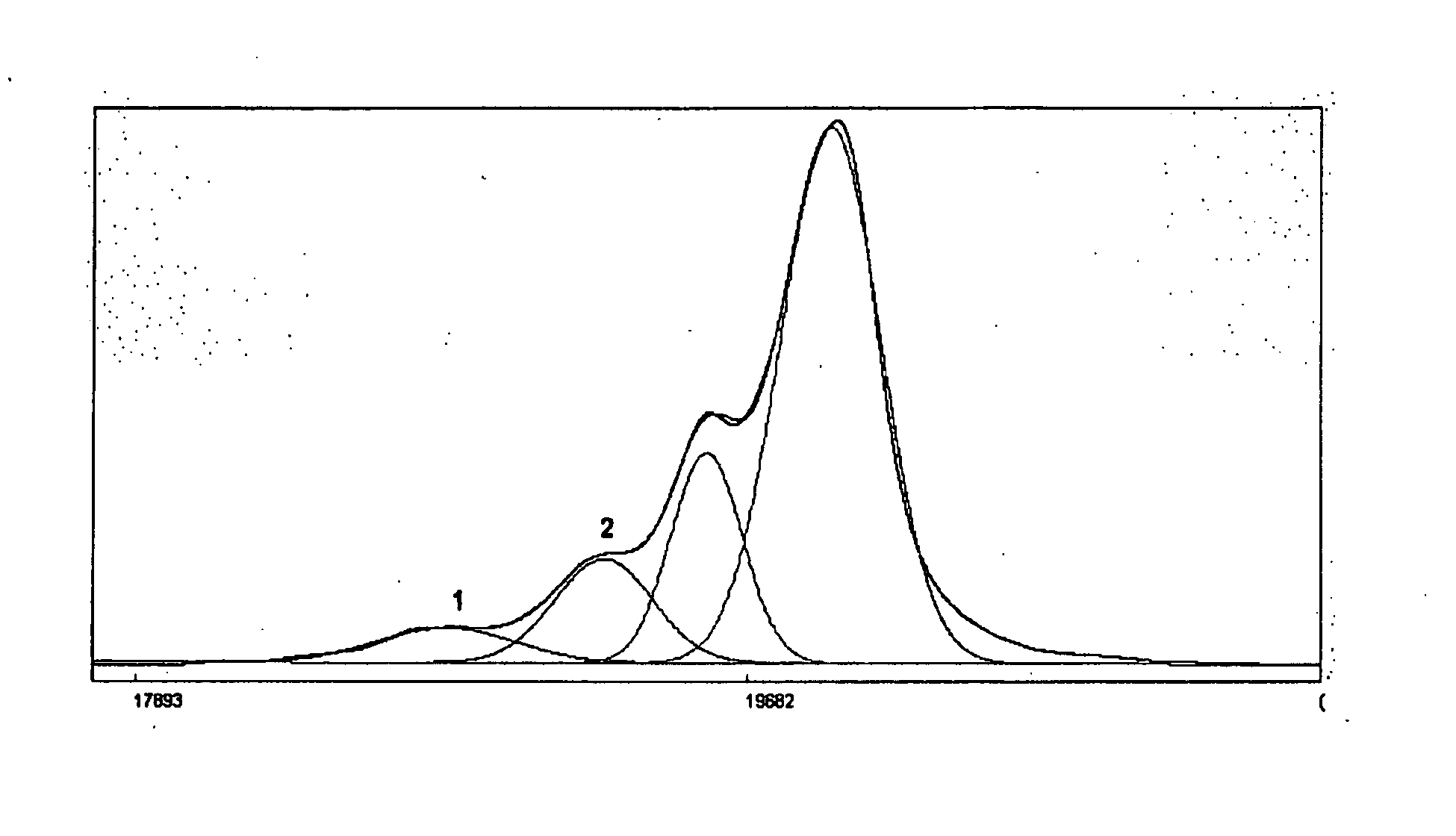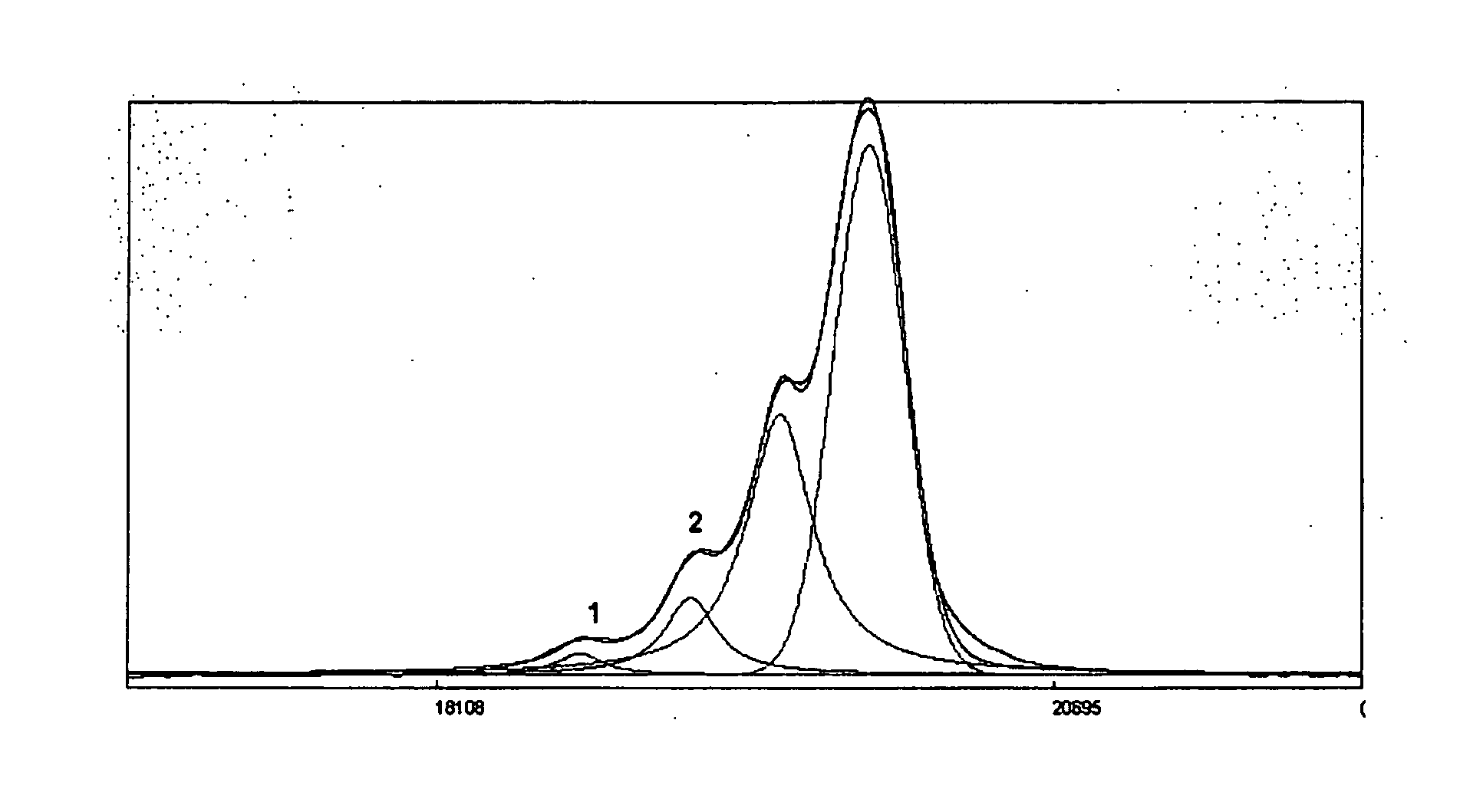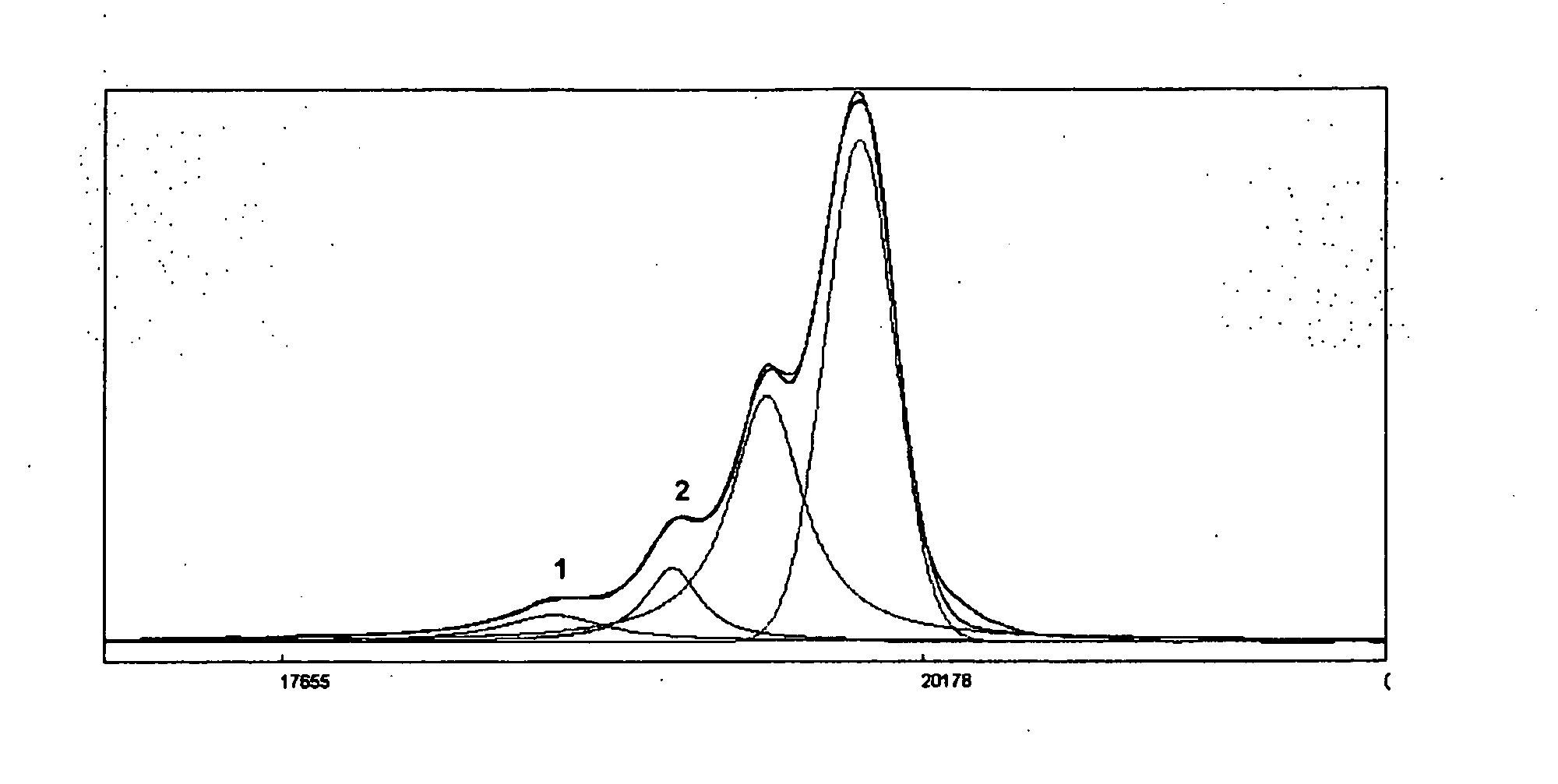Process for the Preparation of Sevelamer Hydrochloride and Formulation Thereof
- Summary
- Abstract
- Description
- Claims
- Application Information
AI Technical Summary
Benefits of technology
Problems solved by technology
Method used
Image
Examples
example 1
Preparation of Polyallylamine Hydrochloride
[0174]Allylamine (75 g) was added to hydrochloric acid (134.2 g) by maintaining the temperature 5 to 15° C. The pH was adjusted to 1 to 2 and the solution was stirred for 30 min. The recovery of acidic water at temp below 90° C. was carried out under vacuum to get allylamine hydrochloride salt and the recovery till approx. about 1 volume of water based on input allylamine was distilled out to get thick mass. The reaction mass was cooled to 25 to 35° C. and water was added to get uniform slurry and the reaction mass was heated to 80 to 85° C. VA-086 (9.82 g), an initiator was added in lotwise manner. First lot of VA-086 was added in about 4 hrs at 80 to 85° C. The reaction mixture was maintained at 80 to 85° C. for a further 8 hrs. Second lot of VA-086 was added in about 2 hrs at 80 to 85° C. and the reaction mixture was maintained for a further 10 hrs at 80 to 85° C. The mass was cooled to 40 to 50° C. and the solution was slowly charged to...
example 2
Preparation of Sevelamer Hydrochloride
[0175]50 g Poly(allylamine hydrochloride) and 75 ml water were mixed at 25 to 35° C. to get a clear solution. The solution was further cooled to 5 to 15° C. and 13.68 g sodium hydroxide solution in water was added to the reaction mass at 5 to 15° C. and stirred for 30 minutes, 400 ml toluene and 2g SPAN-85 were added to it at 5 to 15° C. The temperature of the reaction mixture was then raised to 20 to 25° C. and maintained for 15 min. The reaction mixture was filtered to remove any extraneous matter at 25 to 35° C. The temperature of the filtrate was further raised to 55 to 60° C. and maintained for 15 minutes. 4.5 g epichlorohydrin was added at constant temperature of 55 to 60° C. to reaction mixture and maintained for 3 hr at 55 to 60° C. The reaction mixture was cooled to 25 to 35° C. and product was isolated by centrifugation. The wet cake was further sludged with water (3×750 ml) for 45 min at 25 to 50° C. and filtered and dried in FBD at 2...
example 3
[0176]Poly(allylamine hydrochloride) (50 g) and water (75 ml) were mixed at 25 to 35° C. to get a clear solution. The solution was further cooled to 5 to 15° C. and 14.41 g sodium hydroxide solution in water was added to the reaction mass at 5 to 15° C. and stirred for 30 min. Toluene (400 ml) and SPAN-85 (2 g) were added to it at 5 to 15° C. The temperature was then raised to 20 to 25° C. and maintained for 15 min. The reaction mixture was filtered to remove any extraneous matter at 25 to 35° C. The temperature of the filtrate was further raised to 55 to 60° C. and maintained for 15 min. Epichlorohydrin (3.395 g) was added to the reaction mixture at constant temperature of 55 to 60° C. and maintained for 3 hr at 55 to 60° C. The reaction mixture was cooled to 25 to 35° C. and product was isolated by centrifugation. The wet cake was further sludged thrice with water (3×750 ml) for 45 min. at 25 to 50° C. and finally with isopropanol (750 ml) followed by filteration and dried in tray...
PUM
| Property | Measurement | Unit |
|---|---|---|
| Temperature | aaaaa | aaaaa |
| Temperature | aaaaa | aaaaa |
| Temperature | aaaaa | aaaaa |
Abstract
Description
Claims
Application Information
 Login to View More
Login to View More - R&D
- Intellectual Property
- Life Sciences
- Materials
- Tech Scout
- Unparalleled Data Quality
- Higher Quality Content
- 60% Fewer Hallucinations
Browse by: Latest US Patents, China's latest patents, Technical Efficacy Thesaurus, Application Domain, Technology Topic, Popular Technical Reports.
© 2025 PatSnap. All rights reserved.Legal|Privacy policy|Modern Slavery Act Transparency Statement|Sitemap|About US| Contact US: help@patsnap.com



